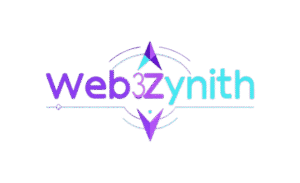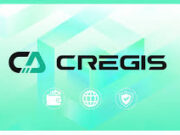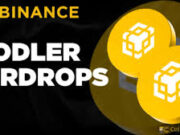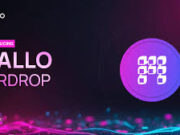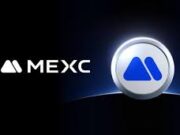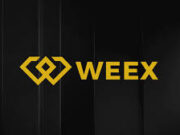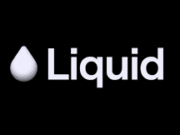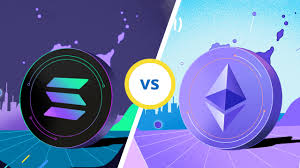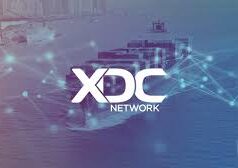The blockchain world is a battleground of innovation, with Ethereum (ETH) and Solana (SOL) standing out as two of the most prominent layer-1 protocols driving the decentralized revolution. Both platforms power decentralized applications (dApps), smart contracts, and Web3 ecosystems, but they cater to different needs with distinct technical approaches. As of June 20, 2025, Ethereum remains the gold standard for smart contract platforms, while Solana has carved a niche as a high-speed, low-cost alternative. This blog post dives into a head-to-head comparison of Ethereum and Solana, exploring their architecture, performance, ecosystems, and use cases to help you understand which blockchain might suit your needs—whether you’re a developer, investor, or crypto enthusiast.
1. Overview: Ethereum and Solana at a Glance
Ethereum:
- Launched: July 2015
- Consensus Mechanism: Proof-of-Stake (PoS) since the Merge in September 2022
- Purpose: A decentralized platform for smart contracts and dApps, powering DeFi, NFTs, and Web3
- Native Token: ETH
- Market Position: The second-largest cryptocurrency by market cap, with a robust ecosystem and widespread adoption
Solana:
- Launched: March 2020
- Consensus Mechanism: Proof-of-History (PoH) combined with Proof-of-Stake (PoS)
- Purpose: A high-performance blockchain for scalable dApps, focusing on speed and low costs
- Native Token: SOL
- Market Position: A top-10 cryptocurrency known for its speed and growing ecosystem, especially in NFTs and DeFi
Both blockchains aim to support decentralized applications, but their approaches to scalability, cost, and decentralization differ significantly. Let’s break down the key differences across critical dimensions.
2. Architecture and Consensus Mechanisms
Ethereum: Proof-of-Stake and Sharding
Ethereum transitioned from Proof-of-Work (PoW) to Proof-of-Stake with the Merge, reducing energy consumption by over 99% and enabling validators to stake ETH to secure the network. Ethereum’s architecture is designed for security and decentralization, with over 1 million validators as of 2025, making it one of the most decentralized blockchains.
To address scalability, Ethereum is implementing sharding through its Ethereum 2.0 roadmap. Sharding divides the blockchain into 64 smaller “shard chains,” allowing parallel transaction processing. While sharding is still in progress, Ethereum relies on layer-2 solutions like rollups (e.g., Optimism, Arbitrum) to boost throughput and reduce costs.
Solana: Proof-of-History and High Throughput
Solana’s unique selling point is its Proof-of-History (PoH) mechanism, which timestamps transactions to create a verifiable sequence of events, enabling faster consensus. Combined with PoS, PoH allows Solana to process transactions in parallel, achieving theoretical throughput of up to 65,000 transactions per second (TPS) compared to Ethereum’s current ~15–30 TPS (without layer-2s).
Solana’s architecture prioritizes speed and scalability, using a single global state and a cluster of validators (around 2,000 as of 2025) to process transactions. However, this comes at the cost of higher hardware requirements for validators, which can impact decentralization.
Key Takeaway: Ethereum prioritizes decentralization and security, while Solana optimizes for speed and throughput, trading off some decentralization for performance.
3. Performance: Speed and Cost
Transaction Speed
- Ethereum: Without layer-2 solutions, Ethereum processes ~15–30 TPS, with block times of ~12 seconds. Layer-2 rollups like Arbitrum and Optimism boost this to thousands of TPS, but they introduce additional complexity and fees.
- Solana: Solana’s PoH enables blazing-fast block times of ~400 milliseconds, with real-world TPS averaging 2,000–3,000 (peaking at 65,000 in ideal conditions). This makes Solana ideal for high-frequency applications like trading or gaming.
Transaction Costs
- Ethereum: Gas fees on Ethereum’s mainnet can be high, often ranging from $1–$10 per transaction during peak times, though layer-2 solutions reduce this to cents. Fees fluctuate based on network demand, making costs unpredictable for users.
- Solana: Solana boasts ultra-low fees, averaging $0.00025 per transaction (about 1/1000th of a cent). This cost-effectiveness makes it attractive for microtransactions and mass adoption.
Key Takeaway: Solana outperforms Ethereum in raw speed and cost on the base layer, but Ethereum’s layer-2 ecosystem narrows the gap for users willing to navigate rollups.
4. Ecosystem and Adoption
Ethereum: The DeFi and NFT Powerhouse
Ethereum is the undisputed leader in decentralized finance (DeFi) and non-fungible tokens (NFTs), hosting:
- DeFi: Over 60% of DeFi’s total value locked (TVL), with protocols like Uniswap, Aave, and MakerDAO managing billions in assets.
- NFTs: Home to major marketplaces like OpenSea and collections like Bored Ape Yacht Club.
- dApps: Thousands of dApps across gaming, social, and governance, supported by a mature developer ecosystem.
Ethereum’s EVM (Ethereum Virtual Machine) is the standard for smart contract development, with languages like Solidity widely adopted. Its first-mover advantage and massive developer community (over 200,000 active developers as of 2025) make it a hub for innovation.
Solana: The Rising Star
Solana’s ecosystem is younger but growing rapidly, particularly in:
- DeFi: Protocols like Serum, Raydium, and Orca have gained traction, though Solana’s TVL ($10 billion) lags behind Ethereum’s ($100 billion).
- NFTs: Solana hosts vibrant NFT marketplaces like Magic Eden, with collections like Solana Monkey Business rivaling Ethereum’s top projects.
- Web3 and Gaming: Solana’s speed makes it ideal for gaming dApps and Web3 applications, with projects like Star Atlas and StepN gaining popularity.
Solana uses Rust for smart contract development, which has a steeper learning curve than Solidity but offers performance advantages. Its developer community is smaller (~50,000 active developers) but expanding, fueled by hackathons and grants.
Key Takeaway: Ethereum dominates in ecosystem maturity and adoption, while Solana is catching up, particularly in high-throughput use cases like gaming and NFTs.
5. Decentralization and Security
Ethereum: The Decentralization Champion
Ethereum’s vast validator network (>1 million) and global distribution make it one of the most decentralized blockchains. Its PoS model incentivizes broad participation, and years of battle-testing have made Ethereum’s mainnet highly secure, though smart contract vulnerabilities remain a risk (e.g., $2 billion in DeFi hacks since 2020).
Solana: Trade-offs for Speed
Solana’s validator count (~2,000) is significantly lower than Ethereum’s, and its high hardware requirements (e.g., 128 GB RAM, high-speed CPUs) limit participation to well-funded nodes. This has led to criticism that Solana is less decentralized, with concerns about potential central points of failure. Solana has also faced network outages (e.g., 17 hours in 2022), though recent upgrades, like Firedancer, have improved stability.
Key Takeaway: Ethereum offers superior decentralization and battle-tested security, while Solana’s performance focus introduces centralization trade-offs and occasional reliability concerns.
6. Use Cases and Applications
Ethereum Use Cases
- DeFi: The backbone of DeFi, powering lending, borrowing, and yield farming.
- NFTs: The go-to platform for digital collectibles and tokenized assets.
- Enterprise Adoption: Used by companies like Microsoft and JPMorgan for blockchain solutions.
- Web3: A hub for decentralized identity, DAOs, and social platforms.
Solana Use Cases
- High-Frequency Trading: Ideal for decentralized exchanges (DEXs) due to low fees and high TPS.
- Gaming and Metaverse: Powers real-time gaming dApps and virtual worlds.
- NFTs: A cost-effective alternative for minting and trading NFTs.
- Mobile and Consumer Apps: Solana’s Saga phone and low-cost transactions target mass adoption.
Key Takeaway: Ethereum excels in mature, enterprise-grade applications, while Solana shines in high-speed, consumer-facing use cases.
7. Challenges and Future Outlook
Ethereum Challenges
- Scalability: Mainnet congestion and high fees remain issues, though layer-2s and sharding aim to address this.
- Complexity: The layer-2 ecosystem can be confusing for new users.
- Competition: Solana and other layer-1s are challenging Ethereum’s dominance in specific niches.
Future Outlook: Ethereum’s sharding rollout (expected to mature by 2026) and layer-2 advancements could push TPS to 100,000+, solidifying its position as the leading smart contract platform. Its focus on decentralization and developer adoption ensures long-term relevance.
Solana Challenges
- Network Stability: Past outages have raised concerns about reliability, though upgrades like Firedancer are mitigating this.
- Decentralization: High validator costs and a smaller node count limit its decentralization.
- Ecosystem Maturity: Solana’s younger ecosystem lags behind Ethereum in TVL and developer tools.
Future Outlook: Solana’s focus on scalability and low costs positions it for growth in gaming, NFTs, and consumer apps. Projects like the Saga phone and partnerships with Web3 startups signal its ambition to capture mainstream audiences.
8. Which Blockchain Should You Choose?
The choice between Ethereum and Solana depends on your priorities:
- Choose Ethereum if:
- You value decentralization and security above all.
- You’re building or investing in DeFi, NFTs, or enterprise-grade dApps.
- You prefer a mature ecosystem with extensive developer tools and community support.
- Choose Solana if:
- You need high-speed, low-cost transactions for gaming, trading, or consumer apps.
- You’re an early adopter looking for high-growth, emerging projects.
- You’re comfortable with a less decentralized but highly performant blockchain.
For developers, Ethereum’s EVM and Solidity offer broader compatibility, while Solana’s Rust-based ecosystem appeals to those prioritizing speed. Investors might see Ethereum as a safer long-term bet due to its market dominance, while Solana offers higher risk-reward potential given its growth trajectory.
Conclusion
Ethereum and Solana are titans in the blockchain space, each with unique strengths and trade-offs. Ethereum’s unmatched decentralization, vast ecosystem, and first-mover advantage make it the foundation of Web3, while Solana’s lightning-fast transactions and low fees position it as a formidable challenger for high-throughput applications. As of June 20, 2025, both platforms continue to evolve, with Ethereum advancing its sharding roadmap and Solana bolstering its stability and ecosystem.
Whether you’re a developer building the next DeFi protocol, an investor eyeing the next big token, or a user exploring dApps, understanding the differences between Ethereum and Solana is crucial. Both blockchains are shaping the future of decentralization, and their competition drives innovation that benefits the entire crypto space. Which one will you choose?
Sources:
- Web research: Ethereum.org, Solana.com, CoinGecko for market data
- X posts: Community sentiment on Ethereum and Solana performance
- Industry reports: DeFi TVL from DefiLlama, validator stats from StakingRewards
